Traditionalist Issues
 |
 |
 |
 |
 |
 |
 |
Dialogue Mass - C
‘The Action of the Mass Is Performed
by the Clergy Alone’
For virtually all Catholics before Vatican II, the idea of “active participation” in the Mass by members of the congregation was inconceivable. For many centuries, the priest was regarded as the “man of the Mass” in the sense of the one who bears the responsibility for performing all its prayers and actions from start to finish.
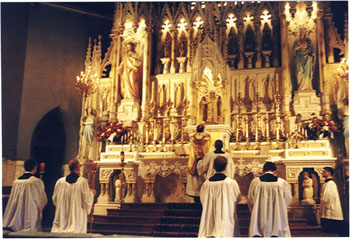 This was still the official position of the Vatican in the years before the Liturgical Movement was inaugurated. For example, the first volume of Ephemerides Liturgicae (1887), an international journal associated with the Congregation of Rites, set out the mind of the Church on this issue, as follows:
This was still the official position of the Vatican in the years before the Liturgical Movement was inaugurated. For example, the first volume of Ephemerides Liturgicae (1887), an international journal associated with the Congregation of Rites, set out the mind of the Church on this issue, as follows:
“The Mass, according to its commonly accepted meaning, is the whole complex of ceremonies and rites performed by the Priest while he carries out the Holy Sacrifice at the altar. This is what the Church affirms when she obliges the faithful to hear Mass; it is understood according to this meaning by the faithful when they assist [i.e. are present] at it, by the Priests when they perform it”. (1)
In other words, everyone who went to Mass understood that the only people with an active role in it were the clergy, and this impression was reinforced by the fact that the gates of the sanctuary were closed – and bolted – during the ceremonies.
This arrangement conveyed a key fact about the Mass: that the area of the sanctuary was the Holy of Holies, and that the ceremonies enacted there were the business of the clergy, not of the laity. Investing the congregation with roles traditionally reserved to the priest was bound to be a severe shock to most Catholics’ imbued sense of right and wrong.
Some earlier testimonies
The 19th-century Catholic priest, Fr. Daniel Rock (2) – a highly respected expert on the liturgical and ceremonial practice of the English Middle Ages – elucidated the point in even clearer and more explicit terms:
“But in the performance of this sacred function, no office is assigned to the people. The Sacrifice is offered up by the priest in their name and on their behalf. The whole action is between God and the priest. So far is it from being necessary that the people should understand the language of the Sacrifice, that they are not allowed even to hear the most important and solemn part of it...
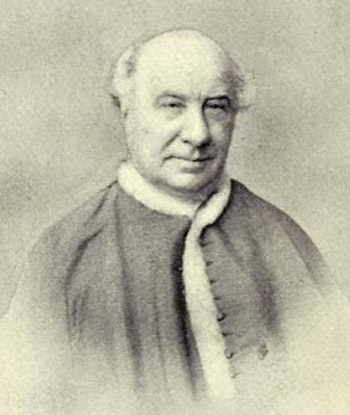 “They attend indeed, and pray, as the crowd did while Zachary was within the Temple: but they do not act; they do not say the prayers of the priest; they have nothing to do with the actual performance of the Holy Sacrifice.” (3)
“They attend indeed, and pray, as the crowd did while Zachary was within the Temple: but they do not act; they do not say the prayers of the priest; they have nothing to do with the actual performance of the Holy Sacrifice.” (3)
The modern Church has moved from “no office is assigned to the people” to “active participation” of all the laity; and from their having “nothing to do with the actual performance of the Holy Sacrifice” to the Vatican II-inspired nostrum: “The priest should do everything with the active participation of the people, and never alone.” (4)
From this fact alone we can gauge how far from Catholic truth the Liturgical Movement strayed from its inauguration by Dom Beauduin on a platform of “active participation” for the laity, based on their “need” to understand the words spoken by the priest and respond accordingly. No such need had ever been identified by any past Pope, including Pius X, in the History of the Church.
Another eminent 19th-century churchman, Card. Nicholas Wiseman, the first Archbishop of Westminster, was equally adamant about the unique role of the priest in the Mass: “Where the principal actor is the priest, having a ministry exclusively his, the rest must be content to join their prayers mentally with his, or rather with the sacred rite performed by him.” (5)
This point is echoed by Fr. Thomas Bridgett in these memorable words:
“But the great act of Catholic worship is the Holy Mass, or the unbloody Sacrifice of the Body and Blood of Jesus Christ. One alone stands forth and makes the awful offering; the rest kneel around, and join their intentions and devotions with his; but even were there not a solitary worshipper present, the sacrifice both for the living and dead would be efficacious and complete.” (6)
Never the twain shall meet
A great chasm in the Church has opened up between traditional and progressivist Catholics on the issue of who is or who is not entitled to perform the visible and external rites of the Mass.
On one side of the yawning divide are those who uphold the traditional teaching that only the clergy have the right to enact liturgical functions. The laity, for their part, had no officially recognized active role in the proceedings; they participated spiritually in the Mass, without performing any of the rites, by joining their prayers and intentions with the actions of the priest at the altar.
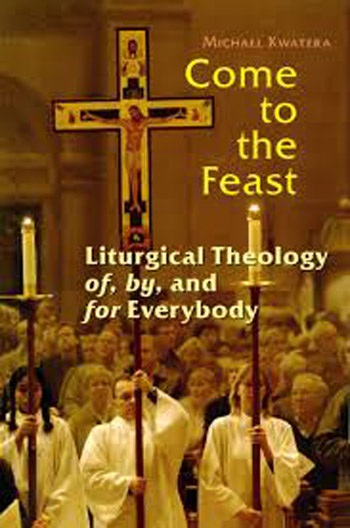 And on the other side are those who believe that the received and accepted tradition of Catholic worship should be superseded by the new “theology of the liturgical assembly,” according to which it is the assembly at large that is corporately endowed with priestly power to perform the liturgy.
And on the other side are those who believe that the received and accepted tradition of Catholic worship should be superseded by the new “theology of the liturgical assembly,” according to which it is the assembly at large that is corporately endowed with priestly power to perform the liturgy.
For them, the Mass is the work of the People of God instead of the work of God for the people, performed at the altar of Sacrifice through the mediation of the priest in his ordained role as alter Christus.
Therein lies the root of the division between the traditional and progressivist positions which amount to two irreconcilable conceptions of the Mass and the Faith. The traditional manner of participation is possible only to those who understand what the Mass truly is.
But the current understanding of the Mass exhibited by most Catholics today has strayed so far from what it had been throughout the History of the Church that we can talk of a sea-change in their perception of the Mass and the ordained priesthood. Some even go so far as to assert heretically that the Mass is not the Mass without the action of the people.
The mantra that heralded and sustains this revolution is, of course, “active participation” mandated by Vatican II,
How subversive is the ‘new liturgical theology’?
The involvement of lay people in the liturgical action is based on the premise that they are entitled to a role in the management and delivery of their own liturgy – hence the spawning of “liturgy committees” in every parish whose members plan the liturgy to suit themselves. But responsibility for the liturgy had always been the exclusive prerogative of the clergy, whose actions were circumscribed by the rubrics of the liturgical books.
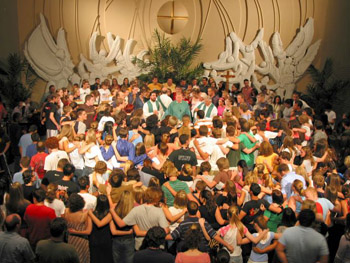 When we consider the teaching of the pre-Vatican II Magisterium on the Mass and the Priesthood, it is clear that the liturgical reformers have based their arguments on ideas imported from Protestantism that mark a radical departure from the Catholic theological tradition. They insist that the tradition inherited from the Council of Trent is now obsolete and must be re-founded on a new basis.
When we consider the teaching of the pre-Vatican II Magisterium on the Mass and the Priesthood, it is clear that the liturgical reformers have based their arguments on ideas imported from Protestantism that mark a radical departure from the Catholic theological tradition. They insist that the tradition inherited from the Council of Trent is now obsolete and must be re-founded on a new basis.
After Dom Beauduin started the Liturgical Movement in 1909 with his rallying cry to “democratize” the liturgy, the driving force behind the demand for “active participation” of the laity was evidently not a concern for the spiritual good of the people, but a revolt against the “patriarchal structures” of the Church. Their aim was to attack priestly privilege as “elitist,” impose a “communitarian” involvement of all in the liturgy and raise the profile of the lay people in the congregation by investing them with clerical roles.
As Fr. J. D. Crichton, one of England’s most prominent progressivist liturgists, remarked in 1973 with reference to the distribution of Holy Communion by lay people: “they will now be able to exercise their priesthood in a way that perhaps they had never envisaged.” (7)
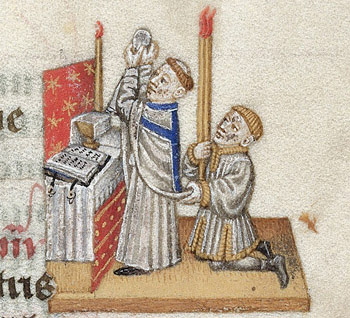 But there can be no alternative to the traditional understanding of the Mass, no mixing or sharing of duties and responsibilities among the ordained ministers and the people in the pews, if the Mass is to keep its identity.
But there can be no alternative to the traditional understanding of the Mass, no mixing or sharing of duties and responsibilities among the ordained ministers and the people in the pews, if the Mass is to keep its identity.
To the extent that those distinctions are not respected – and we have seen examples of how this was put into practice in the liturgical reforms of Pius XII – the nature of the ordained priesthood is undermined.
Fr. Crichton’s observation about the “priesthood of the laity,” though written after the Novus Ordo was imposed on the faithful, is as revealing as a glance in a rear view mirror: in it we catch a glimpse of a motorcade of early 20th-century reformers advancing along the highway of the Liturgical Movement towards their common destination ‒ the creation of a New Mass that would achieve all their strategic objectives.
All hands on deck
Before the Liturgical Movement, no official rubrics of the Roman Missal had ever established a “division of labor” policy between the clergy and the laity, with designated tasks for lay people to perform along with the priest. That is the basic organizing principle of the assembly line in factories where groups work together for the most efficient mass production of goods.
But the Mass is not a joint enterprise in which all the faithful present share the responsibility for its performance (as the Vatican II rule of “active participation” demands), but, as the 19th-century Fr. Nikolaus Gihr explained, is “a liturgical action performed by the priest for propitiating and glorifying God, as well as for the salvation of the faithful.” (8)
By insisting on the “division of labor” as the sine qua non of all Novus Ordo liturgies and imposing it on priests and laity alike, the modern Church has introduced a totally different concept of the Mass ‒ as the work of the “People of God.” For Novus Ordo Catholics, this results in a hostile takeover of clerical roles by predatory lay competitors, as we see happening today before our eyes with the willing compliance of their clergy.
Continued


The altar place occupied only by priests & servers
“The Mass, according to its commonly accepted meaning, is the whole complex of ceremonies and rites performed by the Priest while he carries out the Holy Sacrifice at the altar. This is what the Church affirms when she obliges the faithful to hear Mass; it is understood according to this meaning by the faithful when they assist [i.e. are present] at it, by the Priests when they perform it”. (1)
In other words, everyone who went to Mass understood that the only people with an active role in it were the clergy, and this impression was reinforced by the fact that the gates of the sanctuary were closed – and bolted – during the ceremonies.
This arrangement conveyed a key fact about the Mass: that the area of the sanctuary was the Holy of Holies, and that the ceremonies enacted there were the business of the clergy, not of the laity. Investing the congregation with roles traditionally reserved to the priest was bound to be a severe shock to most Catholics’ imbued sense of right and wrong.
Some earlier testimonies
The 19th-century Catholic priest, Fr. Daniel Rock (2) – a highly respected expert on the liturgical and ceremonial practice of the English Middle Ages – elucidated the point in even clearer and more explicit terms:
“But in the performance of this sacred function, no office is assigned to the people. The Sacrifice is offered up by the priest in their name and on their behalf. The whole action is between God and the priest. So far is it from being necessary that the people should understand the language of the Sacrifice, that they are not allowed even to hear the most important and solemn part of it...

Fr. Daniel Rock: ‘No office is assigned to the people’
The modern Church has moved from “no office is assigned to the people” to “active participation” of all the laity; and from their having “nothing to do with the actual performance of the Holy Sacrifice” to the Vatican II-inspired nostrum: “The priest should do everything with the active participation of the people, and never alone.” (4)
From this fact alone we can gauge how far from Catholic truth the Liturgical Movement strayed from its inauguration by Dom Beauduin on a platform of “active participation” for the laity, based on their “need” to understand the words spoken by the priest and respond accordingly. No such need had ever been identified by any past Pope, including Pius X, in the History of the Church.
Another eminent 19th-century churchman, Card. Nicholas Wiseman, the first Archbishop of Westminster, was equally adamant about the unique role of the priest in the Mass: “Where the principal actor is the priest, having a ministry exclusively his, the rest must be content to join their prayers mentally with his, or rather with the sacred rite performed by him.” (5)
This point is echoed by Fr. Thomas Bridgett in these memorable words:
“But the great act of Catholic worship is the Holy Mass, or the unbloody Sacrifice of the Body and Blood of Jesus Christ. One alone stands forth and makes the awful offering; the rest kneel around, and join their intentions and devotions with his; but even were there not a solitary worshipper present, the sacrifice both for the living and dead would be efficacious and complete.” (6)
Never the twain shall meet
A great chasm in the Church has opened up between traditional and progressivist Catholics on the issue of who is or who is not entitled to perform the visible and external rites of the Mass.
On one side of the yawning divide are those who uphold the traditional teaching that only the clergy have the right to enact liturgical functions. The laity, for their part, had no officially recognized active role in the proceedings; they participated spiritually in the Mass, without performing any of the rites, by joining their prayers and intentions with the actions of the priest at the altar.

The new Liturgical Theology considers the people as equal to the priest in the celebration of the Mass
For them, the Mass is the work of the People of God instead of the work of God for the people, performed at the altar of Sacrifice through the mediation of the priest in his ordained role as alter Christus.
Therein lies the root of the division between the traditional and progressivist positions which amount to two irreconcilable conceptions of the Mass and the Faith. The traditional manner of participation is possible only to those who understand what the Mass truly is.
But the current understanding of the Mass exhibited by most Catholics today has strayed so far from what it had been throughout the History of the Church that we can talk of a sea-change in their perception of the Mass and the ordained priesthood. Some even go so far as to assert heretically that the Mass is not the Mass without the action of the people.
The mantra that heralded and sustains this revolution is, of course, “active participation” mandated by Vatican II,
How subversive is the ‘new liturgical theology’?
The involvement of lay people in the liturgical action is based on the premise that they are entitled to a role in the management and delivery of their own liturgy – hence the spawning of “liturgy committees” in every parish whose members plan the liturgy to suit themselves. But responsibility for the liturgy had always been the exclusive prerogative of the clergy, whose actions were circumscribed by the rubrics of the liturgical books.

A Life Teen Mass with full equality & participation
After Dom Beauduin started the Liturgical Movement in 1909 with his rallying cry to “democratize” the liturgy, the driving force behind the demand for “active participation” of the laity was evidently not a concern for the spiritual good of the people, but a revolt against the “patriarchal structures” of the Church. Their aim was to attack priestly privilege as “elitist,” impose a “communitarian” involvement of all in the liturgy and raise the profile of the lay people in the congregation by investing them with clerical roles.
As Fr. J. D. Crichton, one of England’s most prominent progressivist liturgists, remarked in 1973 with reference to the distribution of Holy Communion by lay people: “they will now be able to exercise their priesthood in a way that perhaps they had never envisaged.” (7)

There can be no sharing of duties with lay people
To the extent that those distinctions are not respected – and we have seen examples of how this was put into practice in the liturgical reforms of Pius XII – the nature of the ordained priesthood is undermined.
Fr. Crichton’s observation about the “priesthood of the laity,” though written after the Novus Ordo was imposed on the faithful, is as revealing as a glance in a rear view mirror: in it we catch a glimpse of a motorcade of early 20th-century reformers advancing along the highway of the Liturgical Movement towards their common destination ‒ the creation of a New Mass that would achieve all their strategic objectives.
All hands on deck
Before the Liturgical Movement, no official rubrics of the Roman Missal had ever established a “division of labor” policy between the clergy and the laity, with designated tasks for lay people to perform along with the priest. That is the basic organizing principle of the assembly line in factories where groups work together for the most efficient mass production of goods.
But the Mass is not a joint enterprise in which all the faithful present share the responsibility for its performance (as the Vatican II rule of “active participation” demands), but, as the 19th-century Fr. Nikolaus Gihr explained, is “a liturgical action performed by the priest for propitiating and glorifying God, as well as for the salvation of the faithful.” (8)
By insisting on the “division of labor” as the sine qua non of all Novus Ordo liturgies and imposing it on priests and laity alike, the modern Church has introduced a totally different concept of the Mass ‒ as the work of the “People of God.” For Novus Ordo Catholics, this results in a hostile takeover of clerical roles by predatory lay competitors, as we see happening today before our eyes with the willing compliance of their clergy.
Continued
- “Missa, prout communiter accipit, est complexus omnium caeremoniarum rituumque, qui per Sacerdotem perficiuntur dum super altare sacrificat. Hanc intendit Ecclesia, cum ad illam audiendam fideles obligat, secundum hanc significationem accipitur a fidelibus cum ei assistunt, a Sacerdotibus cum eam peragunt”. Ephemerides Liturgicae, Rome: Centro Liturgico Vincenziano, Edizioni Liturgiche, vol. 1, 1887, p. 134.
- Fr. Daniel Rock D.D. (1799-1871) was renowned for his immense knowledge and expertise in the areas of medieval English liturgy, Church vestments and architecture. Such was Fr. Rock’s zeal to revive the glories of the pre-Reformation Catholic Church that he was one of the leading lights of the restoration of the Hierarchy in England in 1850.
- Daniel Rock, Hierurgia: or the Holy Sacrifice of the Mass with Notes and Dissertations Elucidating its Doctrines and Ceremonies, 2 volumes, London: Joseph Booker, vol. 1, 1833, p. 294.
- Fr. Ralph Wiltgen S.V.D. affirms: “In an interview following the vote, Bishop Zauner told me that four important aims or principles were reflected in the Constitution on the Sacred Liturgy. ‘The first is that divine worship must be a community action; that is, that the priest should do everything with the active participation of the people, and never alone’. The use of the vernacular, he said, was a necessary condition for such participation.” (The Rhine Flows into the Tiber: The Unknown Council, New York: Hawthorn Books, 1967, p. 137)
This is a revealing insight into the thinking of the liturgical reformers which would be incorporated into Paul VI’s New Mass in conformity with the official interpretation of Vatican II’s Constitution on the Liturgy. - Nicholas Wiseman, Essays on Various Subjects, 3 volumes, London: Charles Dolman, 1853, vol. 1, p. 387. The Cardinal was praising the excellence of the prayers of the Divine Office in which some of the faithful could sing the responses to the psalms, versicles, antiphons etc. because it was essentially a choral service. The Holy Sacrifice of the Mass, however, he considered to be in a different category, unique of its kind.
- Thomas Edward Bridgett, Ritual of the New Testament, New Testament, London: Burns and Oates, 1887, pp. 112-113. Fr. Bridgett makes a distinction between devotions “in which the whole congregation joins, such as the singing of hymns, the recitation of the Rosary, performing the Stations of the Way of the Cross, and especially the chanting of Vespers or Complin,” adding that “Such prayers are either recited in the vernacular or, when Latin is used, they require some little education in those who take a direct and vocal part in them.” (ibid., p. 114)
- The Tablet, April 28, 1973.
- Nikolaus Gihr, The Holy Sacrifice of the Mass; Dogmatically, Liturgically and Ascetically Explained,Freiburg: B. Herder, 1902, p. 329.

Posted March 3, 2021
______________________
______________________
 Volume I |
 Volume II |
 Volume III |
 Volume IV |
 Volume V |
 Volume VI |
 Volume VII |
 Volume VIII |
 Volume IX |
 Volume X |
 Volume XI |
 Special Edition |


